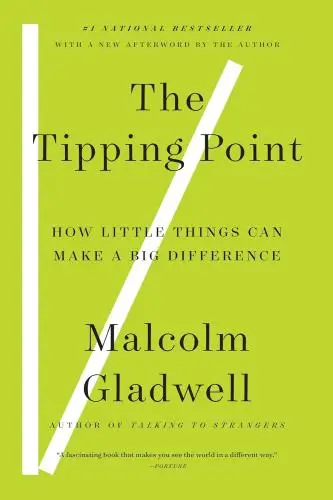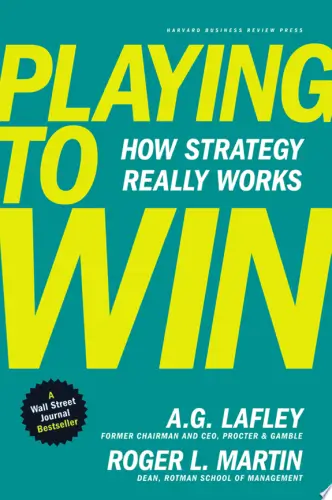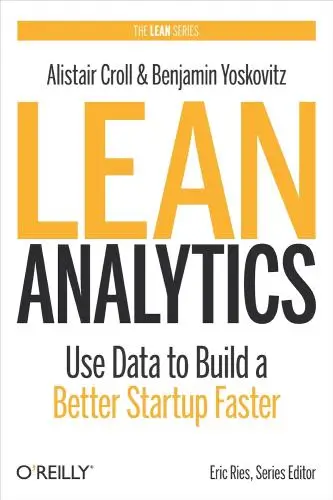
The Tipping Point
How Little Things Can Make a Big Difference
What's it about?
The Tipping Point explores how small changes can lead to significant societal shifts. Gladwell delves into the concept of the tipping point, the moment when an idea, trend, or behavior crosses a threshold and spreads rapidly. He uncovers the factors that contribute to this phenomenon, including the role of connectors, mavens, and salesmen in disseminating information. Through engaging stories and compelling research, Gladwell provides a fascinating insight into the dynamics of social epidemics.
About the Author
Malcolm Gladwell is a best-selling author known for his thought-provoking books such as "Outliers" and "The Tipping Point." With his engaging writing style and unique perspectives, Gladwell explores social psychology, human behavior, and the impact of small changes in various aspects of life. He delves into intriguing topics, challenging conventional wisdom and offering fresh insights that captivate readers and spark meaningful conversations.
7 Key Ideas of The Tipping Point
- The Three Rules of Epidemics
- The Law of the Few
- The Stickiness Factor
- The Power of Context (Part One)
- The Power of Context (Part Two)
- Rumors, Sneakers, and The Power Of Translation
- Suicide, Smoking, & The Search For The Unsticky Cigarette
Epidemics, whether they pertain to infectious diseases or sweeping social phenomena, are not random occurrences. They follow certain patterns and can be dissected into three fundamental principles that explain how they spread and gain momentum. These principles are the Law of the Few, the Stickiness Factor, and the Power of Context.
The Law of the Few: Key Players in Transmission
The Law of the Few posits that a small number of people—often with unique social gifts or behavioral traits—are responsible for making a disproportionate impact on spreading an epidemic. These individuals could be connectors with extensive networks, mavens who accumulate knowledge and share it passionately, or salesmen who persuade others effortlessly. Their role is pivotal because their actions amplify an epidemic's reach far beyond what would occur through average individual contributions.
The Stickiness Factor: Making It Memorable
For an idea or disease to become epidemic, it must stick; this is where the Stickiness Factor comes into play. This principle revolves around how effectively an agent (be it a message or virus) captures attention and remains lodged in memory long enough to encourage transmission from person to person. A sticky idea might have unexpected elements that surprise people or practical value that makes it indispensable—whatever its nature, its memorability drives its contagiousness.
The Power of Context: Circumstances Matter
Finally, there's the Power of Context, which underscores how much our environment shapes our behavior—often more than we realize ourselves. Small changes in context can precipitate significant shifts in behavior patterns; thus understanding these nuances can help predict when conditions are ripe for an epidemic to take off—or conversely when interventions might halt one in its tracks.
Tactics
- Identify Influential Individuals Early: By recognizing those few key players early on—the connectors, mavens, and salesmen—we can target efforts where they'll have maximum effect.
- Create Memorable Messages: Crafting messages with high "stickiness" ensures they resonate deeply enough with individuals so as not only to draw attention but also inspire action.
- Consider Environmental Factors: Paying close attention to contextual factors allows us to tailor approaches sensitive to environmental cues which may dictate human behavior significantly during epidemics.
- Monitor Agent Transformations: Keeping tabs on any evolution within agents themselves—a mutating virus' transmissibility changes—is crucial for staying ahead in managing contagion dynamics effectively.
These tactics serve as guidelines for navigating complex landscapes where human interactions intertwine intricately with biological processes—and doing so successfully hinges upon leveraging deep insights from The Three Rules of Epidemics.
Key Examples/Data
- Baltimore's Syphilis Epidemic: In the mid-1990s, Baltimore experienced a dramatic surge in syphilis cases, with a 500% increase in the number of children born with the disease from 1995 to 1996. The epidemic was attributed to various factors, including the influence of crack cocaine, the breakdown of medical services in the city's poorest neighborhoods, and the physical changes in the heavily depressed neighborhoods on either side of Baltimore's downtown.
- The Role of Exceptional Individuals in Epidemics: John Potterat's analysis of a gonorrhea epidemic in Colorado Springs revealed that about half of all cases came from four neighborhoods representing only 6% of the city's geographic area. Within this small subgroup, a mere 168 individuals were responsible for spreading the disease, with some infecting multiple others. Similarly, individuals like Darnell "Boss Man" McGee and Nushawn Williams played pivotal roles in spreading HIV, emphasizing the disproportionate impact of a few exceptional carriers in tipping epidemics.
- Transformation of Epidemic Agents: The nature of syphilis in Baltimore's poor neighborhoods changed when the city's public clinics suffered cutbacks. The disease shifted from an acute infection, easily treated before widespread transmission, to a chronic infection, allowing carriers more time to spread the disease. Similarly, the strains of flu and HIV underwent transformations, leading to deadlier and more contagious forms, ultimately tipping the respective epidemics.
- The Influence of Context on Epidemics: John Zenilman's mapping of syphilis cases in Baltimore demonstrated the seasonal effect on the number of cases, with a significant decrease during the winter months when people were more likely to stay at home. The Power of Context emphasizes that even the smallest and subtlest factors, such as weather and immediate environment, can significantly influence the behavior and spread of epidemics.
Quotes
- "Epidemics are a function of the people who transmit infectious agents, the infectious agent itself, and the environment in which the infectious agent is operating."
- "A tiny percentage of people do the majority of the work."
- "Stickiness means that a message makes an impact. You can’t get it out of your head. It sticks in your memory."
- "The Power of Context says that human beings are a lot more sensitive to their environment than they may seem."
The Tipping Point Summary: Common Questions
Experience Personalized Book Summaries, Today!
Discover a new way to gain knowledge, and save time.
Sign up for our 7-day trial now.
No Credit Card Needed

Similar Books

$100M Offers
Alex Hormozi
Principles of Marketing, Global Edition
Gary Armstrong
The 100 Best Business Books of All Time
Jack Covert
Playing to Win
A.G. Lafley
Productize
Eisha Armstrong
Start Your Own Pet-Sitting Business and More
Entrepreneur Press
The 22 Immutable Laws of Marketing
Al Ries
The Upstarts
Brad Stone
Lean Analytics
Alistair Croll
Built to Sell
John WarrillowTrending Summaries

Peak
Anders Ericsson
Never Split the Difference
Chris Voss
Smart Brevity
Jim VandeHei
The Psychology of Money
Morgan Housel
The First 90 Days
Michael D. Watkins
Atomic Habits
James Clear
Thinking, Fast and Slow
Daniel Kahneman
The Body Keeps the Score
Bessel van der Kolk M.D.
The Power of Regret
Daniel H. Pink
The Compound Effect
Darren HardyNew Books

The ^AOxford Handbook of Job Loss and Job Search
Ute-Christine Klehe PhD
Job Interviews For Dummies®
Joyce Lain Kennedy
Job Interviews In A Week
Alison Straw
Handbook of Career Development
Gideon Arulmani
The Art of Spending Money
Morgan Housel
$100M Offers
Alex Hormozi
A Candle for Kiri
Edna Mae Holm
Principles of Marketing, Global Edition
Gary Armstrong
Serpent Rising: The Kundalini Compendium
Neven Paar
